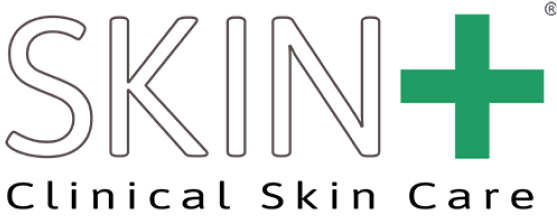Hormonal Acne & PCOS: The Fun, No-Shame Guide to Getting Back in Control of Your Skin Health
If you’re dealing with jawline breakouts and irregular periods, you’re in the right place. Polycystic ovarian syndrome (PCOS) is a common hormonal condition—and when it shows up on the skin, it can look like pcos acne, stubborn bumps, and sometimes full-on cystic acne that refuses to take a hint. Add in irregular periods, weight gain, excess hair growth (or shifting body hair patterns), and hair loss, and the plot thickens. None of this is your fault. Your skin is responding to inside-job chemistry—aka hormonal imbalances—and you can absolutely stack the deck in your favor.
This post is your breezy-but-nerdy walkthrough of the PCOS–acne connection, what medical professionals look for, the treatment options worth discussing, and the everyday lifestyle changes that help you reclaim control of your skin health—without losing your sense of humor (or your sanity).
Okay, but why does PCOS cause acne?
Short answer: insulin resistance and androgen excess are BFFs when it comes to triggering acne breakouts.
- When your cells are meh about insulin, your body often compensates with higher insulin levels. That can push the ovaries and adrenal glands to make more male hormones (androgens).
- Those high levels of androgens (think testosterone levels on the higher side) talk to your sebaceous glands and crank up sebum production.
- More oil production + shifts in fatty acids inside that oil = clogged pores, inflamed bumps, and acne vulgaris that’s deeper, angrier, and fond of the lower face and upper neck.
Bonus clues that point toward the insulin story: velvety dark patches called acanthosis nigricans (commonly on the neck or underarms), a tendency toward oily skin, and frustrating weight loss resistance. You might also notice hunger swings or gut health drama. None of these are required to “qualify,” but together they hint at an underlying hormonal imbalance that deserves a spotlight.
The vibe check: symptoms to watch
PCOS wears many outfits. Common pcos symptoms and symptoms of polycystic ovary syndrome include:
- Acne breakouts that cluster as a type of hormonal acne (often jawline-y), sometimes ramping up before your period.
- Irregular periods or fewer ovulations, and sometimes ovarian cysts/polycystic ovaries on ultrasound.
- Excess hair growth (face/chest/back), shifting body hair, and scalp hair loss (party on the chin, sparse on the crown—rude).
- Weight gain, sugar cravings, and tougher blood sugar management.
If you’re in your teenage years with a family history of acne. Yes, classic hormonal changes can also cause acne. But adult female acne/female adult acne that persists—and especially flares with cycle chaos—deserves a PCOS double-take.
How a healthcare provider actually evaluates PCOS
Spoiler: there’s no single “PCOS test.” A great healthcare provider will layer medical history, physical exam, blood tests, and sometimes imaging to see the full picture.
The usual lab suspects
- Hormone levels to check for androgen excess: total testosterone, free testosterone, DHEAS (plus LH, FSH, estrogen, progesterone to understand sex hormones and ovulation).
- Insulin sensitivity/blood sugar levels: fasting glucose and fasting insulin (or an insulin assay) to spot insulin resistance early.
- Thyroid panel (TSH, Free T4, Free T3 ± reverse T3; antibodies like TPO/TG) since thyroid health conditions can mimic PCOS.
- Inflammation: CRP.
- Micronutrients: vitamin D (and sometimes B-12 and iron), which support overall health and may influence symptoms.
Imaging & nuance
Ultrasound may show polycystic ovaries, but it’s not required; you can have PCOS without cysts, and you can have cysts without PCOS. That’s why the combo of labs + history matters.
Don’t miss the look-alikes
Some issues can mimic PCOS: hyperprolactinemia (elevated prolactin), hypothyroidism, and hypothalamic amenorrhea (under-fueling, over-training, or stress). Heads-up: certain prescription medications—including a few used for high blood pressure—can raise prolactin. This is your sign to bring your full med list to your visit and advocate for a thorough medical history review.
Pro tip: ask for copies of your results. Understanding your testosterone levels, total testosterone, and insulin markers makes it easier to build a personalized treatment plan with your provider.
Not all PCOS looks the same (and you are not a checkbox)
The PCOS “family” has a few recurring characters:
- Insulin-resistant PCOS: the most common. Expect the greatest overlap with cycle wonkiness, pcos-related acne, and metabolic red flags—plus a higher risk for type 2 diabetes without good blood sugar management.
- Post-pill PCOS: a temporary androgen surge after stopping oral contraceptives, birth control pills, or oral contraceptive pills.
- Inflammatory PCOS: systemic inflammation is the ringleader, often with gut health mischief (IBS-ish symptoms), fatigue, or autoimmune tendencies.
- Adrenal PCOS: suggests the adrenal glands are the main source of androgens (for example, elevated DHEAS with normal ovarian androgens), sometimes linked with stress and under-fueling.
You might see yourself in more than one category—and that’s okay. Labels are here to guide treatment options, not define you.
Your skin on PCOS (what to expect)
- Type of acne: deeper nodules and cystic acne with comedones mixed in.
- Distribution: heavy on the lower face/upper neck because oil glands love those zones.
- Texture: more shine thanks to turbo-charged sebum production.
- Persistence: when the driver is hormonal, OTC one-offs often underwhelm. Addressing hormone production cues is key.
The plan: lifestyle, skincare, and medical treatment—working together
Here’s the Skin+ “we’ve-got-you” framework. No gimmicks, no shame, just what actually helps.
1) Lifestyle changes that support hormones and glow
- Healthy diet that stabilizes blood sugar levels: Think protein + fiber + healthy fats at most meals. This smooths glucose curves and supports insulin sensitivity, which indirectly dials down the androgen push on oil glands.
- Movement you’ll actually do: resistance training, brisk walks, bike rides—whatever keeps you consistent.
- Stress & sleep: your sex hormones and stress hormones text each other all day; better sleep habits and recovery time calm the hormonal group chat.
- Weight loss (if medically appropriate): even modest loss can help cycle regularity and skin clarity for insulin-resistant patterns. Zero crash diets, maximum kindness.
- Best ways to stick with it: pre-plan snacks, keep a water bottle nearby, set phone reminders for walks, and track what changes your skin loves.
2) Skincare routine that respects acne-prone, PCOS-prone skin
Let’s keep it smart and simple:
- Benzoyl peroxide: great for those big, inflamed breakouts
- Salicylic acid or Mandelic Acid: clears gunk from inside the pore and helps refine texture (especially helpful on oily skin).
- Retinoid lane: I will actually start my PCOS clients on this if they just have lower jawline/chin breakouts. Our Daily A has Mandelic Acid in it, so you are getting both the acid in Retinol in one
- Sunscreen + moisturizer that won’t clog you up, every day.
3) Medical treatment to discuss with your provider
- GLP-1 or Metformin can be useful for insulin resistance
- Oral contraceptives/birth control pills/oral contraceptive pills can temporarily suppress ovarian androgens and improve acne while you’re on them. This is symptom control—not a permanent fix for the underlying hormonal imbalance.
- Other prescription medications may include anti-androgens (e.g., spironolactone) for hair symptoms, topical antibiotics for infected lesions, and fertility meds if baby-making is on the vision board.
Your body, your goals. If something doesn’t align, get a second opinion. Tag in your derm, OB-GYN, or primary care—create a tiny A-team of medical professionals who listen.
FAQs (a lightning round with extra sparkle)
What’s the exact cause of PCOS?
There isn’t one. The exact cause of PCOS seems to be a mash-up of genetics, environment, in-utero exposures, and lifestyle. It’s a hormonal disorder with ovarian and systemic fingerprints.
Do I need cysts to “count”?
Nope. You can have polycystic ovaries, no cysts, or cysts with no PCOS. Diagnosis is about patterns (cycle changes + androgens + ruling out other things), not just ultrasound pictures.
Why jawline breakouts?
Androgens + oil glands = sebum production city. The lower face/upper neck are particularly rich in sebaceous real estate.
Is PCOS dangerous?
Untreated insulin resistance can raise metabolic risk. Good blood sugar management and targeted care lower that risk while helping your skin.
How is this different from “regular” acne?
PCOS-driven breakouts are a type of hormonal acne within acne vulgaris—often deeper, more tender, and more persistent acne that shrugs at basic spot treatments.
Your next-step checklist (steal this)
- Book with your provider and bring your symptom timeline (acne patterns, menstrual cycle notes, hair changes, sleep, energy). Ask for targeted blood tests: total testosterone/testosterone levels, DHEAS, LH/FSH, fasting insulin and glucose, full thyroid panel, CRP, and vitamin D.
- Review meds: flag anything that could impact prolactin (some prescription medications, including certain high blood pressure meds).
- Name your priorities: acne control, cycle regularity, conception—your treatment plan should center you.
- Tackle daily rhythms: balanced meals, consistent movement, real sleep.
- Give it time: hormones work on their own schedule. Expect a few cycles to see measurable shifts toward clear skin.
A few Skin+ pep-talk truths
- You didn’t cause this with chocolate or your skincare routine.
- You aren’t “too old” to improve acne severity or balance your skin.
- You deserve a plan that fits your life, whether that’s oral medications, medical treatment, simple habit shifts, or all of the above.
Women of reproductive age are told to “just take the pill” far too often. Sometimes that’s the right move; sometimes it’s a Band-Aid. Either way, your voice matters. If a strategy doesn’t feel right, ask questions, look at your labs, and go for that second opinion. You are the CEO of your skin—and yes, we’re absolutely here to help with the ops manual.
This article is for informational purposes only and isn’t a substitute for individualized medical advice. Please partner with qualified medical professionals to craft your plan


